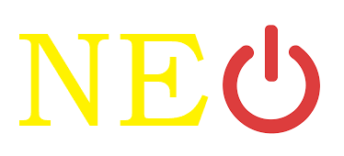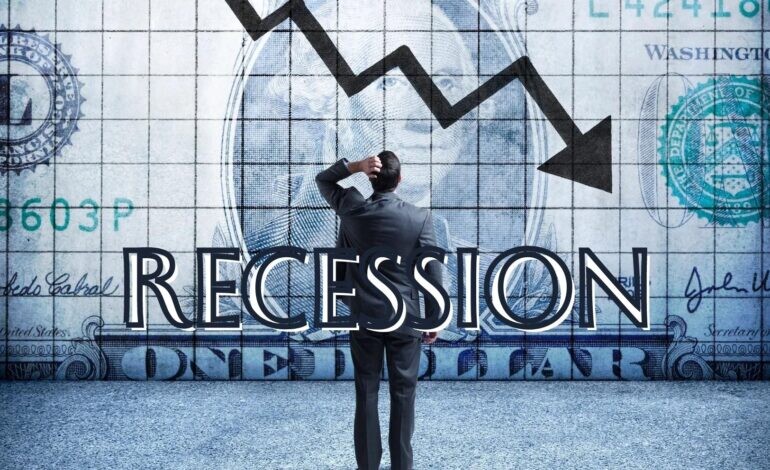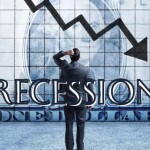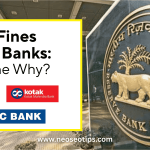A recession is the point at which the GDP growth pace of a nation is negative for two back to back quarters or more. In any case, a recession can be measured even before the quarterly GDP reports are out in view of key monetary markers like assembling information, decrease in salaries, work levels and so forth.
Although an economy can give indications of debilitating a long time before a recession starts, the most common way of deciding if a nation is in a genuine recession (or not) frequently takes time. A recession is short, yet its effect can long-endure.
Table of contents [Show]
Why recession occur?
Understanding the wellsprings of recessions has been one of the persevering through areas of examination in financial aspects. There are different reasons recessions happen. Some are related with sharp changes in the costs, which lead to soak drop in spending by both the private and public areas.
A few recessions, similar to the 2008 worldwide monetary implosion, are established in monetary market issues. Sharp expansions in resource costs and a fast extension of acknowledge frequently concur for gathering of obligation. As organizations and families move past expanded and face challenges in gathering their obligation commitments, they lessen venture and utilization, which thus prompts a decline in monetary action. Not all such credit blasts end up in recessions, yet when they do, these recessions are in many cases more exorbitant than others. In certain nations with solid product areas, recessions can be the consequence of a decrease in outside interest. Unfavorable impacts of recessions in huge nations — like Germany, Japan, and the United States — are quickly felt by their provincial exchanging accomplices, particularly during worldwide synchronized recessions.
A few recessions are additionally a consequence of worldwide shocks like the flow Covid set off lockdowns, which shut down monetary movement in numerous nations.
Indicators of a Recession

1. Gross Domestic Product (GDP)
Real GDP indicates the total value generated by an economy (through goods and services produced) in a given time frame, adjusted for inflation. Negative real GDP indicates a sharp drop in productivity
2. Real income
Real financial gain is calculated by measure income, adjusting it for inflation, and discounting Social Security measures like welfare payments. A decline in real financial gain reduces getting power.
3. Manufacturing
The health of the manufacturing sector, taking into account overall exports/imports and trade deficits (or a trade surplus) with other countries, signifies the strength and self-sufficiency of an economy.
4. Wholesale/Retail
Both wholesale and retail sales, adjusted for inflation, are also measured to gauge the market performance of goods.
5. Employment
A high rate of state could be a insulating material indicator. It usually confirms AN economy’s pivot into a recession stage instead of predicting a recession within the future. Usually, state rates nearing 6 June 1944 of the full men are thought-about problematic.
Causes of a Recession

1. Real Factors
A sudden change in external economic conditions and structural shifts can trigger a recession. This fact is explained by the Real Business Cycle Theory, which says a recession is how a rational participant in the market responds to unanticipated or negative shocks.
For example, a sudden rise in oil prices due to growing geopolitical tensions can harm crude oil-importing economies. A revolutionary technology that causes automation in factories can disproportionately impact economies with a huge pool of unskilled labour.
2. Financial/Nominal factors
According to a school of economics called monetarism, a recession is a direct consequence of over-expansion of credit during expansion periods. It gets exacerbated by insufficient money supply and credit availability during the initial stages of a slowdown.
There is a significant correlation between monetary and real factors, such as interest rates and relationships between certain goods. The relationship is not explicit because monetary policy instruments such as interest rates also encompass institutional responses to anticipated slowdowns.
Financial indicators of an upcoming recession are often tied to benchmark interest rates. For example, the Treasury yield curve inverted in the 18 months preceding the last seven financial crises in the U.S. Also, a sustained fall in equity values shows lower expectations for the future.
3. Psychological Factors
Psychological factors include excessive euphoria and overexposure to risky capital during an economic expansion period. The 2008 Global Financial Crisis was, at least in part, a result of irresponsible speculation that led to the formation of a bubble in the housing market in the US. Psychological factors can also manifest as a curtailed investment resulting from widespread market pessimism, which lacks grounds in the real economy.
What was the cause of the 2008 financial crisis?

As banks may expire the chance to the investors, they were jubilantly sanctionative loans to folks while not correct documentation and adequate ratings. nobody disturbed regarding the implications. whereas all sounded like rainbows and unicorns for a jiffy, before long reality demanded its approach back.
The prices of the housing sector saw a fall at the start of 2005, and therefore the banks witnessed a great deal of their borrowers defaulting the compensation.
Would you offer poison to AN already dying person? however what the banks did was one thing like that. instead of turning out with some reliable resolution, they set to extend the interest rates any. They thought that they might offset the losses by charging higher rates on those that build regular payments or a minimum of build a acutely aware effort to pay. The rates were magnified from 2.25% to 5.25%. Burdened by huge interest rates, the defaults solely magnified.
While the banks secure safety and security with the next come back, their action failed to project a similar. And by the tip of 2007, the yank economy formally entered the recession.









